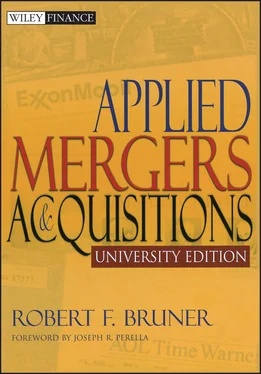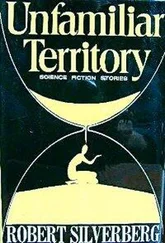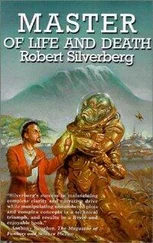An objection to this argument is that in some settings promoting ethical behavior is no guarantee of team building. Indeed, teams might blow apart over disagreement about what is ethical or what action is appropriate to take. Yet typically this is not the fault of ethics, but rather of team processes for handling disagreements.
Ethics sets a higher standard than laws and regulations. Several chapters in this book highlight the boundaries on managerial action set by laws and regulations. But to a large extent, the law is a crude instrument: It tends to trail rather than anticipate behavior; it contains gaps that become recreational exploitation for the aggressive businessperson; justice may be neither swift nor proportional to the crime; and as Andrew Wicks said, it “puts you in an adversarial posture with respect to others, which may be counterproductive to other objectives in facing a crisis.” 5 To use only the law as a basis for ethical thinking is to settle for the lowest common denominator of social norms. As former chairman of the Securities and Exchange Commission (SEC) Richard Breeden said, “It is not an adequate ethical standard to want to get through the day without being indicted.” 6
Some might object to this line of thinking by claiming that in a pluralistic society, the law is the only baseline of norms on which society can agree. Therefore, isn’t the law a “good enough” guide to ethical behavior? Lynn Sharpe Paine (1999) argues that this leads to a “compliance” mentality and that ethics takes one farther. She writes, “Attention to law, as an important source of managers’ rights and responsibilities, is integral to, but not a substitute for, the ethical point of view—a point of view that is attentive to rights, responsibilities, relationships, opportunities to improve and enhance human well-being, and virtue and moral excellence.” 7
Reputation and Conscience
Motivating ethical behavior by appealing solely to benefits and avoiding costs is inappropriate. After all, the average annual income for a lifetime of car thievery (even counting years spent in prison) is large—so it seems that crime does pay. If income were all that mattered, most of us would switch into this lucrative field. The business world features enough cheats and scoundrels to offer any professional the opportunity to break promises, or worse, for money. Ethical professionals decline these opportunities for reasons having to do with the kind of people they want to be. Amar Bhide and Howard H. Stevenson (1990) write, “The answer lies firmly in the realm of social and moral behavior, not in finance. The businesspeople we interviewed set great store on the regard of their family, friends, and the community at large. They valued their reputations, not for some nebulous financial gain but because they took pride in their good names. Even more important, since outsiders cannot easily judge trustworthiness, businesspeople seem guided by their inner voices, by their consciences…. We keep promises because it is right to do so, not because it is good business.” 8
The reflective practitioner will summon more reasons, or more interesting variations on these. Other writers—see, for instance, Carroll (1999) and Kidder (1997)—give explanations generally rooted in the expectations of society and the self-interest of firms.
IN WHOSE INTERESTS ARE YOU WORKING?
Generally, the M&A executive or deal designer is an agent acting on behalf of others. For whom are you the agent? Two classic schools of thought emerge.
1 Stockholders. The U.S. legal framework generally requires directors and managers to operate a company in the interests of its shareholders— Chapter 26discusses this in more detail. The shareholder focus lends a clear objective: Do what creates wealth for shareholders. This would seem to limit charitable giving, “living wage” programs, voluntary reduction of pollution, and enlargement of pension benefits for retirees—all of these loosely gather under the umbrella of the “social responsibility” movement in business. Milton Friedman (1962), perhaps the most prominent exponent of the stockholder school of thought, argues that the objective of business is to return value to its owners and that to divert the objective to other ends is to expropriate shareholder value and threaten the survival of the enterprise. Also, the stockholder view would argue that if all companies deviated, the price system would cease to function well as a carrier of information about the allocation of resources in the economy. The stockholder view is perhaps dominant in the United States, United Kingdom, and other countries in the Anglo-Saxon sphere.
2 Stakeholders. The alternative view admits that stockholders are an important constituency of the firm, but that other groups such as employees, customers, suppliers, and the community also have a stake in the activities and success of the firm. Edward Freeman (1984) argues that the firm should be managed in the interest of the broader spectrum of constituents. The manager would necessarily be obligated to account for the interests and concerns of the various constituent groups in arriving at business decisions, the aim being to satisfy them all, or at least the most concerned stakeholders on each issue. The complexity of this kind of decision making can be daunting and slow. In addition, it is not always clear which stakeholder interests are relevant in making specific decisions. Such a definition seems to depend highly on the specific context, which would seem to challenge the ability to achieve equitable treatment of different stakeholder groups. But the important contribution of this view is to suggest a relational view of the firm and to stimulate the manager to consider the diversity of those relationships.
Adding complexity to the question of whose interests one serves is the fact that often one has many allegiances—not only to the firm or client, but also (as a person) faithful to one’s community, family, and so on. Obligations that one has as an employee or professional are only a subset of obligations one has on the whole.
WHAT IS “GOOD”? CONSEQUENCES, DUTIES, VIRTUES
One confronts ethical issues when one must choose among alternatives on the basis of right versus wrong. The ethical choices may be stark where one alternative is truly right and the other truly wrong. But in professional life, the alternatives typically differ more subtly, as in choosing which alternative is more right or less wrong. Ernest Hemingway said that what is moral is what one feels good after and what is immoral is what one feels bad after. Since feelings about an action could vary tremendously from one person to the next, this simplistic test would seem to admit moral relativism as the only course, an ethical “I’m okay, you’re okay” approach. Fortunately, 3,000 years of moral reasoning lend frameworks for greater definition of what is “right” and “wrong.”
“Right” and “Wrong” Defined by Consequences
An easy point of departure is to focus on outcomes. An action might be weighed in terms of its utility 9 for society. Who is hurt or helped must be taken into consideration. Utility can be assessed in terms of the pleasure or pain for people. People choose to maximize utility. Therefore, right action is that which produces the greatest good for the greatest number of people.
Utilitarianism has proved to be controversial. Some critics feared that this approach might endorse gross violations of norms that society holds dear including the right to privacy, the sanctity of contracts, and property rights, when weighed in the balance of consequences for all. And the calculation of utility might be subject to special circumstances or open to interpretation, making the assessment rather more situation-specific than some philosophers could accept.
Читать дальше












